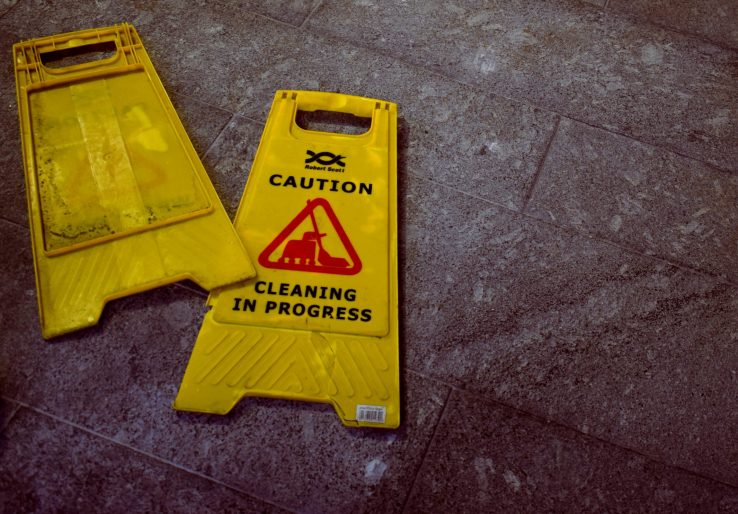The rapid spread of SARS-CoV-2, the coronavirus causing COVID-19, over the past two years has been nothing short of devastating. Although widespread vaccination and new antiviral therapies are helping to mitigate the worst outcomes of the disease, the recent evolution of the highly transmissible Omicron variant has only added to the strain on our health-care systems.
Omicron spreads so quickly that it is no longer feasible to use individual testing to track how many people are infected in a population. And that means we no longer have the basic information we need to inform public health mitigation policies.
New strategies for keeping tabs on the virus are needed.
One approach is to look for the virus in the environment rather than people. Infected individuals shed viral particles, either in their stool or by breathing or coughing, and viral particles collect in environmental reservoirs like sewage or surfaces such as furniture or floors.
Sampling wastewater or the built environment allows us to detect trace viral particles, providing a window into the burden and location of infection without having to test individuals directly.
Wastewater testing has been used extensively since the beginning of the pandemic by municipalities worldwide. The viral genome concentration in wastewater has proven to be an accurate predictor of human case burden, providing an early-warning signal for public health officials. Wastewater sampling provides a bulk measure of viral load across a large geographic area, but isn’t as useful at smaller scales, like in rooms within a school or office building. This is where surface testing could be useful.
Floors and surfaces
We started exploring this idea by focusing on a place where we know there are lots of people infected with COVID-19: hospitals. We wanted to know whether we could detect the virus in the built environment where COVID-19 patients normally reside and whether this information revealed anything about the number of infected individuals.
Our approach was simple. We used a sterile swab, which looks like a typical cotton swab you might buy at a local pharmacy, wiped it across the surface in question, and then stored it in a special solution that preserved the sample for transport back to the lab. We then used standard molecular biology techniques to test the sample for the presence of SARS-CoV-2.
After confirming we could recover the virus from acrylic, vinyl and stainless steel surfaces touched regularly in a hospital, we set out to collect samples from two area hospitals. We swabbed surfaces from COVID-19 and non-COVID-19 wards in two Ottawa hospitals over the course of about 10 weeks, collecting close to 1,000 swabs in total. We focused on high-touch objects like door handles, elevator buttons and computer terminals, as well as floors and benches.
Reassuringly, we rarely detected the virus on high-touch surfaces, presumably because these were being cleaned regularly. The floors, though, were another story.
We recovered the virus from the floors of COVID-19 wards far more frequently than from non-COVID-19 wards. We suspect this is because virus particles released into the air from infected people then settle on the floor where they accumulate steadily over time and the floors are cleaned less frequently than other objects like door handles or computer keyboards.
COVID-19 patients don’t move around much once they enter the hospital, so there is plenty of opportunity for the virus to accumulate in the environment around them. This result tells us that by sampling floors, we can identify sites within a building where infectious individuals are present or not.
Changing case numbers
Cases reported from individual testing declined in the hospital and across Ottawa during our study period. This trend provided us with a good test case for our approach. If there are fewer cases being admitted to the hospital, we should recover the virus less often from the floors of COVID-19 wards and the viral burden in wastewater outflows from the hospital should also decline.
This was exactly what we saw: both surface and wastewater testing indicated a steady drop in viral prevalence over time, mirroring the data we saw from conventional individual testing. Surface testing seems to be a reliable approach to viral surveillance, one that gives a more spatially refined view as to where the virus is, and where it is not, in areas where infected people might gather.
As promising as this approach is, our study was restricted to hospitals where patients and staff are already screened regularly for the virus. The real test of its value is whether it can be useful in settings where individual screening cannot be done on a regular basis, and whether it provides a signal of infection in advance of cases.
We are working to provide answers through a much larger study of long-term care homes, schools and daycares. Preliminary results are promising: floor samples can detect the virus up to a week before cases are reported in some of these facilities. If these results hold up, we will have a new tool to guide us in managing a safe return to life.![]()
Aaron Hinz is a research associate of Evolution and Biodiversity at L’Université d’Ottawa/University of Ottawa. Rees Kassen is a Professor of Evolutionary Biology at the L’Université d’Ottawa/University of Ottawa
This article is republished from The Conversation under a Creative Commons license. Read the original article.









